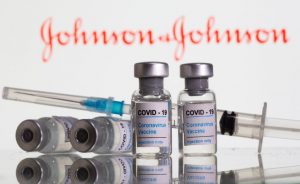A total of approximately seven million people have been injected with Johnson & Johnson’s COVID-19 immunization. Now, the FDA has paused the use of the vaccine, and the Advisory Committee on Immunization Practices has asked the Centers for Disease Control and Prevention to return with more data on the side effects.
The pause occurred after J&J’s vaccine was linked to blood clotting as a rare side effect. This side effect includes clotting near the brain with low levels of platelets. So far one woman has died, and five others have been hospitalized. Onset of these side effects is occurring six to thirteen days after injection. With half of the total injections being within the past two weeks, more cases may be emerging.
The blood clotting has been observed primarily in women between the ages of 18 and 48. One man in the clinical trial also showed this side effect. Researchers have suggested restrictions based on age and gender, but they would be difficult to apply.
The Advisory Committee on Immunization Practices urged a continuation of the pause as data is collected in order to make an informed decision. While these cautionary measures may be necessary in order to adequately assess the safety of the vaccine, the pause may also have unintended negative consequences for vaccine administration as a whole.
Removing one of the three vaccination options may slow the rollout of immunizations, particularly given that J&J’s vaccine is the only one that requires only one shot – a feature that would vastly speed up the process of achieving herd immunity.
While the available immunizations from Moderna and Pfizer have reduced the urgency to resume J&J’s vaccine, it would be ideal to have an additional, speedier option, especially for those with access concerns and frontline workers. The other potentially damaging consequence of the pause could be an increase in apprehension about taking any of the vaccines, which could result in more people opting out altogether.
With so few cases, many have predicted a resumption of the vaccine, however healthcare workers will be given guidelines on how to recognize and treat patients who develop these rare side effects. If the use of the vaccine resumes, recipients can also expect additional documentation about the potential risks.
The Food and Drug Administration is continuing to monitor the United States government database for other side effects. So far, the main concern is blood clotting that blocks a vein that drains blood from the brain, but the CDC and FDA are continuing to monitor the situation should other additional health complications arise.























